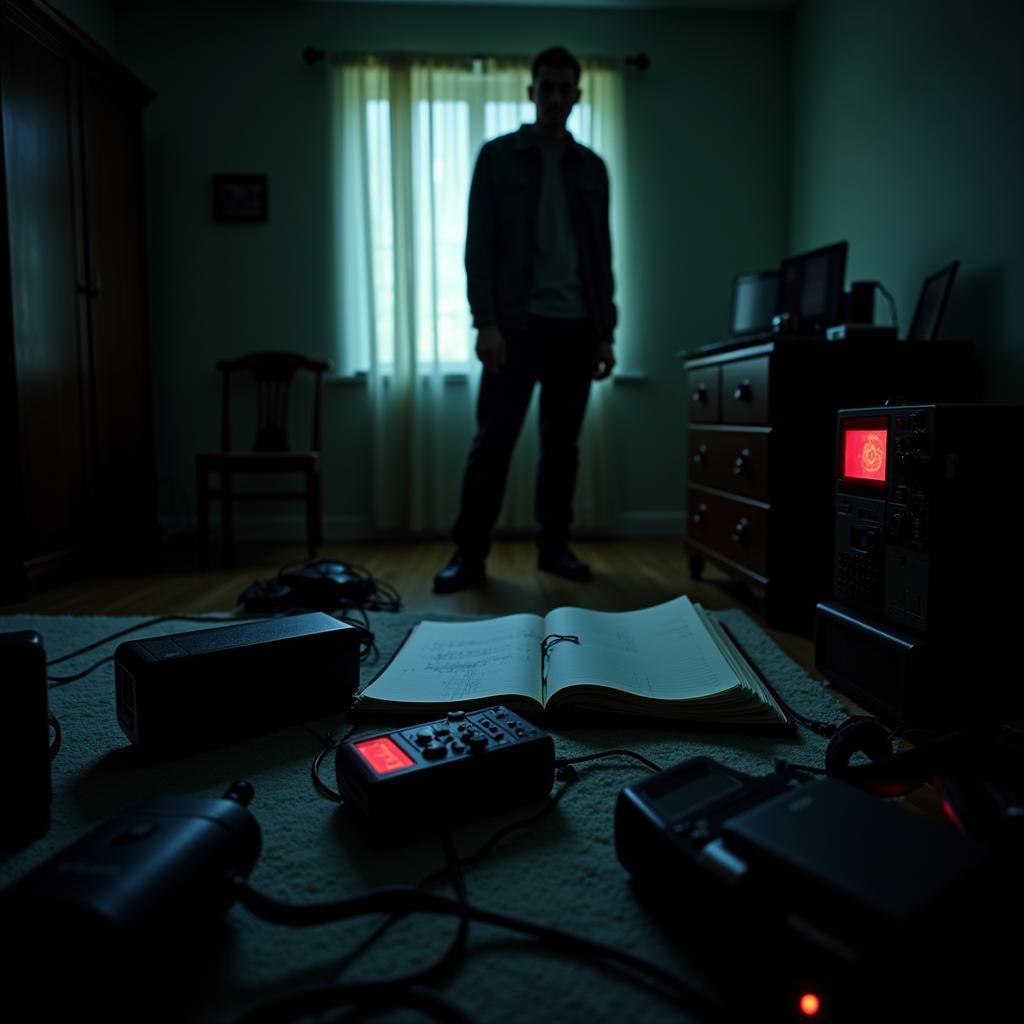The world of paranormal research is often shrouded in mystery, leaving many with questions about the validity and scientific rigor applied to such investigations. One key aspect of exploring the unknown is understanding and interpreting Experimental Research Articles. These articles provide a structured framework for researchers to share their findings, contributing to the ongoing dialogue within the paranormal community and beyond.
 Experimental Research Setup for Paranormal Investigation
Experimental Research Setup for Paranormal Investigation
What Makes Experimental Research Unique?
Unlike anecdotal accounts or personal experiences, experimental research articles adhere to a systematic approach. This involves formulating a hypothesis, designing a controlled experiment, collecting and analyzing data, and drawing conclusions based on the evidence gathered.
The Importance of a Testable Hypothesis
At the heart of any experimental research article is a testable hypothesis. This is a specific, measurable prediction about the relationship between two or more variables. For instance, a researcher might hypothesize that the presence of electromagnetic fields (EMFs) correlates with increased reports of paranormal activity. This hypothesis then guides the entire research process.
Dissecting the Structure of Experimental Research Articles
Understanding the typical structure of these articles can help you navigate the often-complex world of scientific literature:
- Abstract: Provides a concise summary of the research, including the hypothesis, methodology, and key findings.
- Introduction: Sets the stage for the research by outlining the background information, existing literature, and the research gap that the study aims to address.
- Methodology: Details the materials, procedures, and participants involved in the study. This section is crucial for understanding how the research was conducted and whether the methods used were appropriate and rigorous.
- Results: Presents the findings of the study in a clear and objective manner, often using tables, graphs, and statistical analyses to illustrate the data.
- Discussion: Interprets the results, drawing connections to the initial hypothesis and discussing the implications of the findings.
- Conclusion: Summarizes the key takeaways of the research and suggests potential avenues for future studies.
 Researchers Analyzing Data from a Paranormal Investigation
Researchers Analyzing Data from a Paranormal Investigation
Critical Evaluation: A Reader’s Guide
When encountering experimental research articles, it’s essential to approach them with a critical eye:
- Who are the authors? Investigate their credentials and expertise in the field.
- Where was the research published? Reputable peer-reviewed journals lend credibility to the findings.
- Are the methods sound? Evaluate the study design, sample size, and data analysis techniques used.
- Are the conclusions supported by the data? Be wary of overstated claims or generalizations that go beyond the scope of the findings.
- What are the limitations of the study? All research has limitations, and acknowledging them is a sign of good scientific practice.
Beyond the Data: The Bigger Picture
While experimental research articles provide valuable insights, it’s important to remember that paranormal research is a complex and evolving field. Findings should be considered within the broader context of existing knowledge and ongoing investigations.
Exploring Further: Navigating Related Resources
- To delve deeper into the role of specific substances in Paranormal Research, you can explore research chem tadalafil.
- For insights into research facilities and their connection to the paranormal, you might find 777 research drive lincoln ne intriguing.
Understanding and critically evaluating experimental research articles is essential for anyone seeking a deeper understanding of the paranormal. By embracing a scientific and evidence-based approach, we can continue to explore the mysteries of the unknown with a discerning and informed perspective.